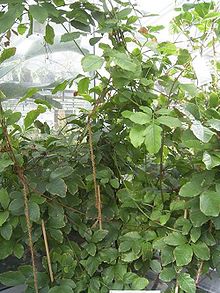**History and Culture of Guarana**:
– Originated from the Amazon rainforest
– Used by indigenous tribes for centuries
– Introduced to the Western world in the 16th century
– Popular in South America
– Found in energy drinks and supplements
– Guaraná word origin from Guaraní word ‘guara-ná’
– Role in Tupi and Guarani culture
– Myth of guaraná domestication by a deity
– Preparation of herbal tea by Guaranis
– Introduction to European colonizers in the 16th century
**Composition of Guarana**:
– Guaranine in guaraná is identical to caffeine
– Natural sources of caffeine contain varying xanthine alkaloids
– Main natural phenols in guaraná are catechin and epicatechin
– Components found in guaraná seeds
– Guaraná used in beverages, soft drinks, energy drinks, and herbal teas
**Beverages and Commercial Use**:
– Brazil produces soft drink brands from guaraná seeds
– Fermented drink from guaraná seeds, cassava, and water
– Paraguay also produces guaraná soft drinks
– Guaraná widely used in Brazil, Peru, and Paraguay for soft drinks
– Guaraná used in various beverages and products in South America
– Widely used in energy drinks
– Added to dietary supplements
– Ingredient in cosmetics and skincare products
– Flavoring agent in food products
– Marketed as a natural stimulant
**Caffeine Content and Health Benefits**:
– Contains more caffeine than coffee beans
– Stimulant effects due to caffeine
– Provides energy and mental alertness
– Used as a natural alternative to coffee
– Caffeine content varies among products
– Rich in antioxidants
– May improve focus and concentration
– Potential weight loss aid
– Supports heart health
– May reduce fatigue
**Cultural Significance and References**:
– Used in traditional ceremonies
– Symbol of vitality and strength
– Incorporated into local folklore
– Popular ingredient in Brazilian sodas
– Part of Amazonian culture
– Guaraná Antarctica – a guaraná flavored soft drink from Brazil
– Various studies and articles on guaraná
– Information on the biological and chemical aspects of guaraná
– Historical references and cultural significance of guaraná
Guaraná (/ɡwəˈrɑːnə/ from the Portuguese guaraná [ɡʷaɾɐˈna]; Paullinia cupana, syns. P. crysan, P. sorbilis) is a climbing plant in the family Sapindaceae, native to the Amazon basin and especially common in Brazil. Guaraná has large leaves and clusters of flowers, and is best known for the seeds from its fruits, which are about the size of a coffee bean.
| Guaraná | |
|---|---|

| |

| |
| Scientific classification | |
| Kingdom: | Plantae |
| Clade: | Tracheophytes |
| Clade: | Angiosperms |
| Clade: | Eudicots |
| Clade: | Rosids |
| Order: | Sapindales |
| Family: | Sapindaceae |
| Genus: | Paullinia |
| Species: | P. cupana
|
| Binomial name | |
| Paullinia cupana | |
As a dietary supplement or herb, guaraná seed is an effective stimulant: it contains about twice the concentration of caffeine found in coffee beans (about 2–8% caffeine in guarana seeds, compared to about 1–3% for coffee beans). The additive has gained notoriety for being used in energy drinks. As with other plants producing caffeine, the high concentration of caffeine is a defensive toxin that repels insects from the berry and seeds.
The color of the fruit ranges from brown to red and it contains black seeds that are partly covered by white arils. The color contrast when the fruit is split open has been compared with the appearance of eyeballs, and has become the basis of an origin myth among the Sateré-Mawé people.
